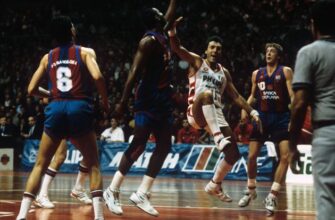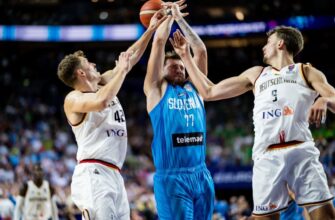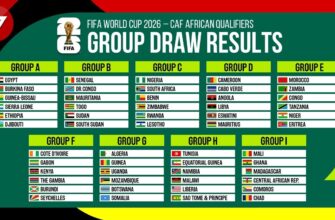As the countdown to the 2026 FIFA World Cup on home soil intensifies, the United States Men`s National Team (USMNT) finds itself in a precarious position. What should be a period of consolidation and refinement has instead become a series of rigorous trials, leaving fans and pundits alike to ponder whether the team is building towards a cohesive unit or merely navigating a perpetual state of experimentation.
The Persistent Quest for Cohesion
Recent performances have cast a long shadow over the USMNT`s World Cup aspirations. A friendly defeat, serving as a vital opportunity for player evaluation, laid bare a collection of familiar, unsettling patterns. Despite statistically outperforming their opponents in terms of shots and expected goals – a testament to offensive intent – the final score often reflects a stark inefficiency. Critical moments in both defense and attack consistently prove decisive, but not in the USMNT’s favor.
The sentiment from the national team’s coaching staff suggests a deliberate strategy of achieving “organized chaos” – a dynamic system where fluidity and adaptability reign supreme. However, the on-field reality often deviates, morphing into what appears to be unorganized chaos, particularly in crucial phases of play. With less than a year until the global spectacle, the urgent question remains: can this controlled disarray coalesce into a formidable tactical identity?
The Manager`s Gambit: Experimentation or Indecision?
A hallmark of the current managerial tenure has been a relentless commitment to player rotation and tactical variation. Records indicate a staggering number of distinct starting lineups across a relatively small sample of matches. This “sink-or-swim” approach, while aiming to identify the optimal squad, frequently seems to muddy the waters, making it difficult for the team to establish a consistent rhythm or for players to forge strong on-field partnerships. One might observe this strategy and, with a touch of irony, note that while variety is often the spice of life, in professional football, too much spice can simply overwhelm the palate.
The rationale is clear: provide inexperienced players with vital international exposure. As one seasoned midfielder aptly noted, adapting to the national team`s high-pressure environment is significantly different from the daily comforts of club football in Europe. Yet, the consequence of this extensive vetting process is a team that occasionally appears disjointed, raising concerns about fundamental defensive organization and offensive sharpness, particularly in crucial fixtures.
Defensive Dilemmas and Attacking Frustrations
The team’s defensive vulnerabilities have been particularly glaring. Key absences or players out of form can expose a backline that, at times, lacks the robust coordination required at the international level. Individual brilliance from attacking full-backs is thrilling to witness, but if it comes at the expense of defensive discipline, it creates a precarious balance. Similarly, in the final third, the USMNT often generates a respectable volume of scoring opportunities, yet a persistent lack of clinical finishing frequently prevents these efforts from translating into tangible results.
This recurring issue of converting promising phases of play into goals, while simultaneously conceding preventable ones, paints a picture of a team struggling with execution under pressure. The statistics—being outscored significantly in first halves against top-ranked opponents—underscore a pattern that extends beyond mere bad luck; it suggests systemic challenges that demand immediate solutions.
The Clock is Ticking: A Race Against Time
The road to a home World Cup carries immense weight. The expectation is not merely to participate but to genuinely compete and make a significant statement on the global stage. For the USMNT, this necessitates a swift transition from an extended period of “testing” to a phase of decisive action. The luxury of broad experimentation dwindles with each passing month.
The challenge for the coaching staff is to distill the vast pool of talent into a coherent, high-performing squad. This involves not only identifying the best individual players but, crucially, fostering an environment where tactical instructions are instinctively understood, defensive triggers are universally recognized, and attacking movements flow seamlessly. The “chasing shadows” described by players after tactical breakdowns highlights the urgent need for immediate and profound adjustments in collective understanding.
Ultimately, the narrative surrounding the USMNT is one of potential marred by inconsistency. The ambition is palpable, the talent evident, but the path to realizing that potential requires an acceleration of growth. The countdown has begun, and the world will be watching to see if the Stars and Stripes can find their rhythm and transform their current state of uncertainty into a formidable force for 2026.









